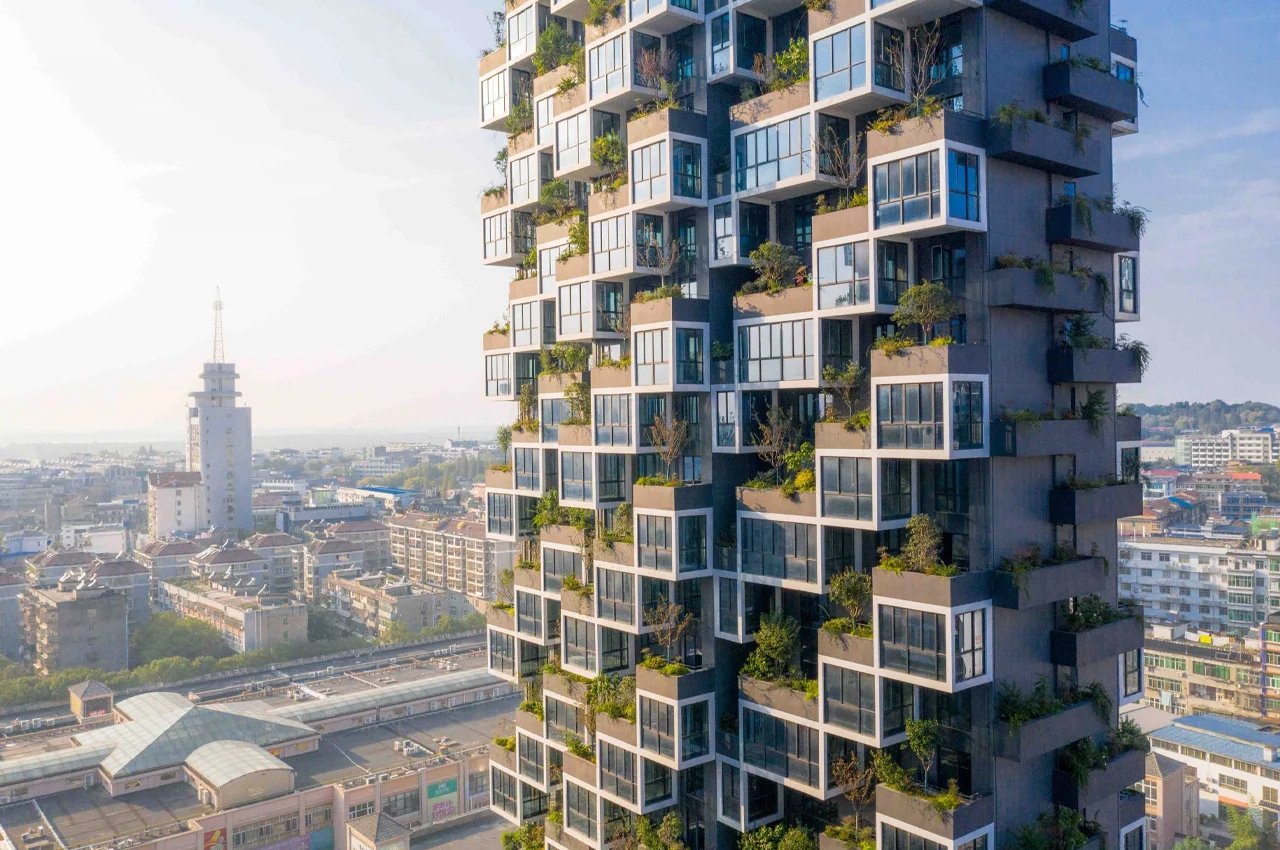With IKEA turning 80 this yr, Dezeen spoke to its international design managers Eva Lilja Löwenhielm and Johan Ejdemo about AI, working with exterior designers and why it stays a “distinctive low-price model”.
Löwenhielm and Ejdemo oversee Swedish furnishings model IKEA’s 23 in-house designers, in addition to the 200-or-so freelance designers that assist create its 2,000-2,500 new merchandise per yr.
Whereas some design to particular pitches for various areas of the house, Löwenhielm and Ejdemo additionally work with groups which are wanting additional forward.
“Some designers give us pitches or are in shut collaboration with our enterprise areas, after which we additionally work with what we name collections, the place we’re extra explorative or interested in issues,” Löwenhielm stated.
“We’re in some early exploration tasks as nicely, the place we’re working with our innovation groups and searching into issues which are perhaps 5 to 10 years forward.”
In addition to creating in-house collections, IKEA additionally steadily collaborates with outdoors designers and not too long ago labored with Dutch designer Sabine Marcelis on the Varmblixt assortment.
In response to Löwenhielm and Ejdemo, that is symptomatic of the model’s curiosity about designs that differ from its personal.
“We’re interested in different expressions that we do not usually do, or which are questioning,” Löwenhielm stated. “And people rely on the collaborators. So that’s the starting – why will we do that collaboration collectively?”
“An instance could possibly be a curiosity about how we deliver gentle into the house differently,” added Ejdemo. “It could be fairly near what we do, however nonetheless have a really particular viewpoint.”
“We’ll proceed to evolve within the methods we collaborate, and the portfolio of collaborations may look completely different sooner or later than it has previously – most likely it would as a result of we attempt to enhance as nicely.”
The model’s designs have typically been tailored and copied, with a lot of corporations providing their very own designs that can be utilized to refurbish current IKEA merchandise – one thing that Ejdemo sees as a constructive factor.
“I personally have a really constructive view of it. We allow creativity and we allow artistic options at dwelling,” he stated.
These variations may assist the IKEA staff perceive what individuals need from their merchandise, based on the design managers.
“We in all probability study lots ourselves about issues that we would not be doing that we ought to be doing,” Ejdemo stated.
“However these options that we confer with, they would not slot in our imaginative and prescient of being reasonably priced – they typically develop into extraordinarily costly, and might take quite a lot of time earlier than you get them.”
Up to now few years, IKEA has closed a lot of its bigger shops and created smaller places in metropolis centres together with a car-free retailer in Vienna with a gridded facade and a Copenhagen retailer with a rooftop park that’s set to open this yr.
The model can be set to open a retailer on London’s Oxford Road this autumn.
This variation from bigger out-of-town shops to smaller shops hasn’t affected the best way wherein the merchandise are designed, based on the design supervisor duo.
“We nonetheless have the identical design rules and we attempt to be the place persons are,” Ejdemo stated.
Whereas prospects at the moment are maybe extra more likely to see the merchandise on-line earlier than going to an IKEA retailer, the one factor that has been affected is the model’s logistics.
“The one change we’re working in direction of is making the dimensions of the packaging extra accessible for on-line gross sales,” stated Löwenhielm. “We’ve got all the time tried to minimise the fabric use and be good.”
“With IKEA, you all the time design [products] to suit right into a field,” Ejdemo stated. “We do not need to transport air, that sits inside sustainability and prices as nicely.”
“It is within the DNA when doing an IKEA product design – you can’t do the design with out having an concept of how it may be damaged down to suit into packaging,” he added.
Up to now yr, synthetic intelligence (AI) has begun to have an growing influence on the structure and design industries, with structure studios, together with Zaha Hadid Architects, utilizing it to get inspiration for tasks.
Among the many design outfits to have used it’s Space10, IKEA’s analysis collective, which not too long ago created an idea for a foldable sofa.
The expertise has additionally been picked up by the designers working with Löwenhielm and Ejdemo.
“The design staff is taking part in round with it already as a result of they mess around with every thing new, that is simply the character of who they’re,” Ejdemo stated.
“[Not using it] could be as incorrect as saying that images would not be fascinating for us as a result of we’re portray such reasonable footage,” he added. “Clearly, we’re interested in what’s coming sooner or later.”
The corporate not too long ago celebrated its eightieth anniversary with an exhibition at Milan design week that checked out IKEA’s previous in addition to its future.
“We all the time get the query of what has to vary and the best way to keep related, ” Ejdemo stated. “We’re all the time reflecting the society that we’re in.”
“Butthere are additionally quite a lot of issues in IKEA which are a relentless – we all know we’ve a imaginative and prescient, we all know who we’re: we’re for a lot of, perhaps not for everybody,” he added.
“We’ve got an concept that’s to make merchandise which are reasonably priced. If our merchandise make you content, aid you think about the best way to resolve one thing in your house and do not put an enormous gap in your pockets, that is type of what we do beneath our imaginative and prescient.”
Whereas mass-production typically carries destructive connotations, Ejdemo argued that IKEA sees it as a possibility to drive progress and affect industries.
“For us, [mass-production is] a risk to drive progress and alter and truly affect industries to enhance and develop into higher,” he added. “Low-price is an consequence of doing that extra effectively.”
“I often say that we’re a low-price band however not any low-price model, we’re a really distinctive low-price model with a really distinctive viewpoint on what we do,” Ejdemo stated.
“There are only a few corporations that make investments as a lot in design as we do at IKEA.”
“We’re additionally a progressive firm that wishes to lean ahead, like [with] AI, and I am certain there can be errors there as nicely,” Ejdemo added.
“However we’re an organization that encourages errors, so long as we do not repeat them.”
The images is courtesy of IKEA.
Dezeen In Depth
If you happen to take pleasure in studying Dezeen’s interviews, opinions and options, subscribe to Dezeen In Depth. Despatched on the final Friday of every month, this text offers a single place to learn in regards to the design and structure tales behind the headlines.

